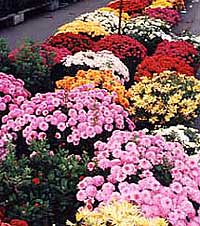I decided that I would finally find out why it is called Medicine Hat, and some other sundry details about it.
First, the name:
- Long ago, a great battle was fought between the Cree and Blackfoot tribes, on the bank of what is now called the South Saskatchewan River, which runs through what is now the center of Medicine Hat.
- The Cree were battling hard, but then they saw their medicine man's eagle tailfeather headdress on the ground and they knew he had deserted them. In many tribes, the medicine man was hugely essential to the community, filling the role of spiritual leader, doctor, and overall guide.
- When the Cree saw that their medicine man had left, they knew they were done for, and they put down their weapons. They were subsequently slaughtered by the Blackfoot tribe.
- Afterwards the site was referred to as Saami, which is the Blackfoot word for medicine man's hat.

Map of Medicine Hat by the Lion's Club of Medicine Hat
- Medicine Hat is located in the southeastern corner of Alberta, about 250 miles from Great Falls, Montana.
- The city is situated in a river valley, pretty much in the middle of prairies.
- The TransCanada Highway also runs diagonally along the southwest side of the city.

There's a big statue of a moose in Medicine Hat
(Photo from Big Things in Canada)
- If you go to the city's official website, you will see that it wants to be known as "The Gas City." Okay, Medicine Hat, I'll call you Gas City if you really want me to.
- Actually, there are roughly 20 billion cubic meters of natural gas below the surface of Medicine Hat and its environs
- Rudyard Kipling said all that gas below ground meant the area had "all hell for a basement."
- Most locals refer to their city as "The Hat."
- An environmental study of Canadian weather found that Medicine Hat is the sunniest city in Canada, with over 2,500 hours of sunshine per year. It also had the highest number of days without rain.
- As I type this, it is -6 degrees Fahrenheit in Medicine Hat (for you Canadians, that's -27 degrees C).

This is spring on Medicine Hat College's campus
(Photo from Medicine Hat College)
- As of June 2005, Medicine Hat's population totaled 56,048. To put that into perspective,
- Toronto's population is roughly 5.2 million
- Quebec has 710,800 folks
- Windsor has almost 331,000, or about 5 times the people of Medicine Hat.
- In addition to natural gas mining companies and farms in the outlying areas, there's also an army reserve unit based in Medicine Hat (South Alberta Light Horse). Just west of the city is the Suffield base, which trains a lot of military troops, including folks deployed for NATO missions.
- You can relax in 100 parks, all within the city limits and all linked by an extensive trail system.
- In August, you can attend the Medicine Hat Stampede, which is actually a rodeo (Canada's second largest), complete with a parade, livestock show, art show, petting farm, and midway.
- In December, the city erects a singing Christmas tree downtown. That's what they say, anyway.

These cows live in Medicine Hat
(Photo from Pahl Livestock)
Sources
WorldWeb.com, Medicine Hat Travel & Tourism and Map of Canada
Medicine Hat, Alberta Business Directory
Canadian Relocation Systems, Medicine Hat, Alberta
TransCanadaHighway.com, Medicine Hat, Alberta
Big Things in Alberta, City of Medicine Hat, Alberta
Reference.com, Medicine Hat, Alberta
Environment Canada, Weather Winners Highlights
City Population, Canada





































